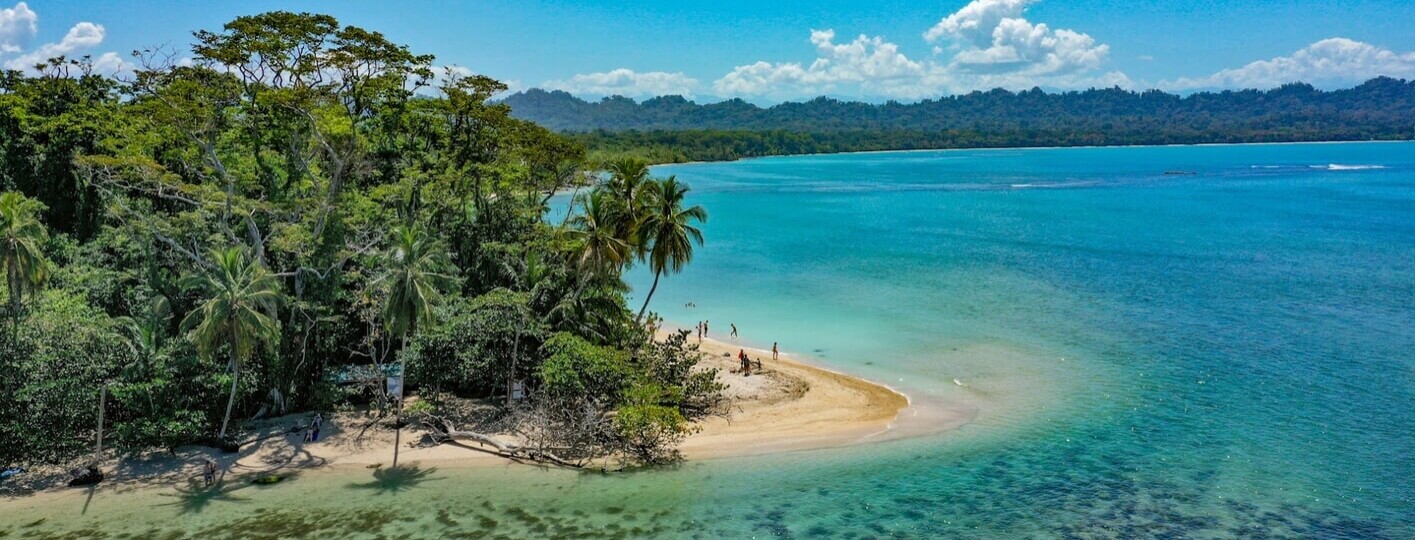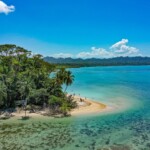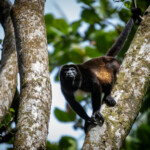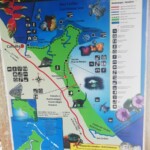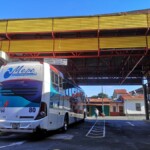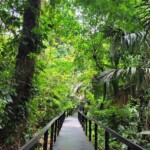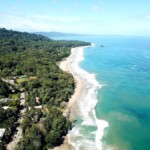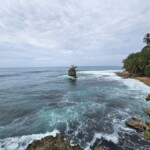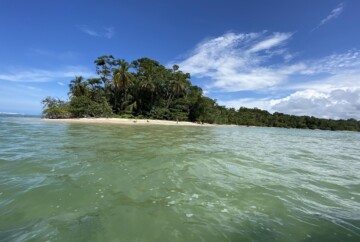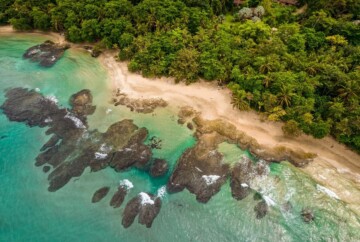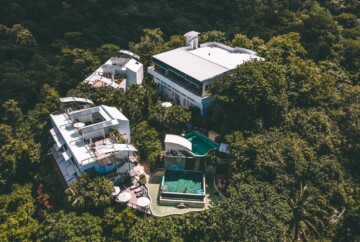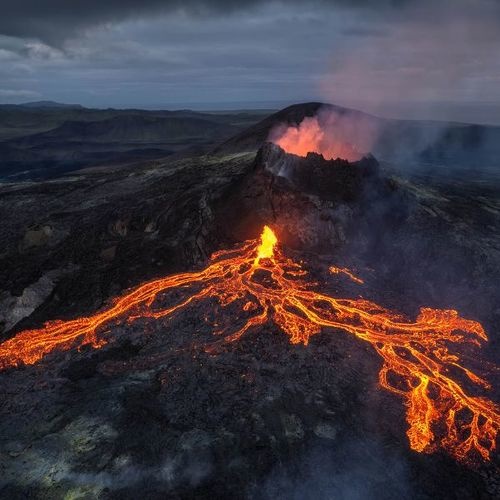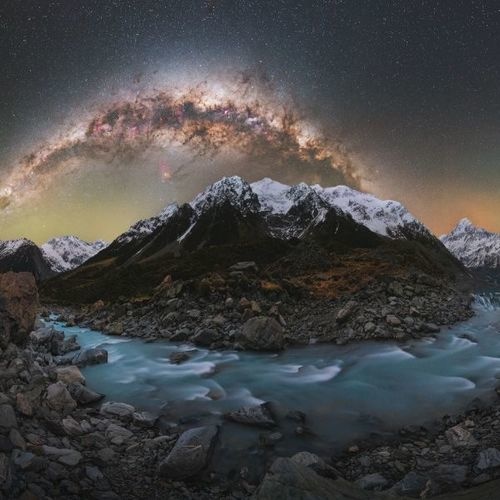Located on Costa Rica’s Caribbean coast, Cahuita National Park is where nature takes center stage. If you’re looking for a place teeming with wildlife and breathtaking landscapes, this is it! You’ll find well-maintained trails perfect for spotting local wildlife—Cahuita is one of the best places in Costa Rica to see sloths up close! Its pristine beaches lead to the most well-preserved coral reef in the Caribbean, making it a top snorkeling destination.
I’ll be honest—I didn’t know what to expect before visiting, but Cahuita National Park completely won me over. It quickly became one of my favorite national parks in Costa Rica. What makes it even more special is that it’s managed by the local community, ensuring that tourism benefits the people who call this area home while promoting sustainable development in Limón Province.
Beyond the park itself, plenty of must-see attractions in Costa Rica are located nearby, so if you’re wondering what to do in Cahuita, you’ll have no shortage of amazing experiences.
Guide to visiting Cahuita National Park
Here’s what I’ll cover to help you explore one of Costa Rica’s best-kept secrets:
- Best things to do in Cahuita National Park
- Top attractions near Cahuita National Park
- Cahuita National Park entrance fees
- Cahuita National Park operating hours
- How to get to Cahuita National Park
- Tips for visiting Cahuita National Park
- Best hotels in Cahuita, Costa Rica
- Best restaurants in Cahuita
Best things to do in Cahuita National Park
Cahuita is an absolute paradise for nature lovers, packed with incredible scenery and abundant wildlife. If you’re wondering how to make the most of your time, here are some of the best things to do in Cahuita, Costa Rica:
Hike the coastal trail through Cahuita National Park
If there’s one thing you shouldn’t miss, it’s hiking the main trail through Cahuita National Park. This well-maintained, mostly flat path stretches along the coastline for about 5 miles, offering spectacular views of the turquoise Caribbean waters. As you walk, keep your eyes peeled—you might spot sloths, monkeys, raccoons, iguanas, and countless other unique animal species of Costa Rica hiding in the lush rainforest.
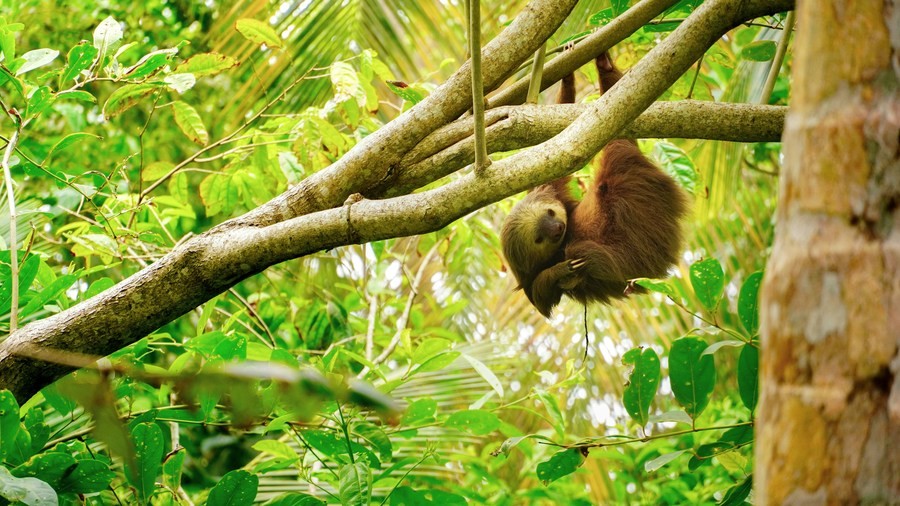
Hike the coastal trail through Cahuita National Park
One of the best ways to experience the trail is with a guide. I was amazed by how they could spot animals in places where I only saw leaves and branches! It’s like watching the forest come to life in front of you. When I took this private tour, we saw three-toed sloths, various species of Costa Rican monkeys, raccoons, and even iguanas. But we didn’t just take photos; we learned about the animals and their behaviors, making the experience even more memorable.
One thing to keep in mind: the trail isn’t a loop, meaning if you hike the entire path, you’ll enter from one side and exit from another. Many visitors walk to Punta Cahuita, the halfway point, and then head back the way they came. But it’s completely up to you! No matter how far you go, this is a relaxing and scenic hike where you can take your time, enjoy the views, and even stop for a refreshing dip in the ocean along the way.
Hike the Los Cativos Trail
The Los Cativos Trail might not be as famous as the main trail, but it was one of the most memorable parts of our visit. After finishing our hike along the coast, our guide, José, suggested we take on this extra 1.5-mile walk through the heart of the jungle.
Honestly, we were already feeling a little worn out, but how often do you get the chance to immerse yourself in the Costa Rican rainforest? So, after a quick swim at the beach to cool off, we made our way to the Puerto Vargas entrance, where this trail begins. If it’s your first time entering from this side, keep in mind that there’s a separate entrance fee.
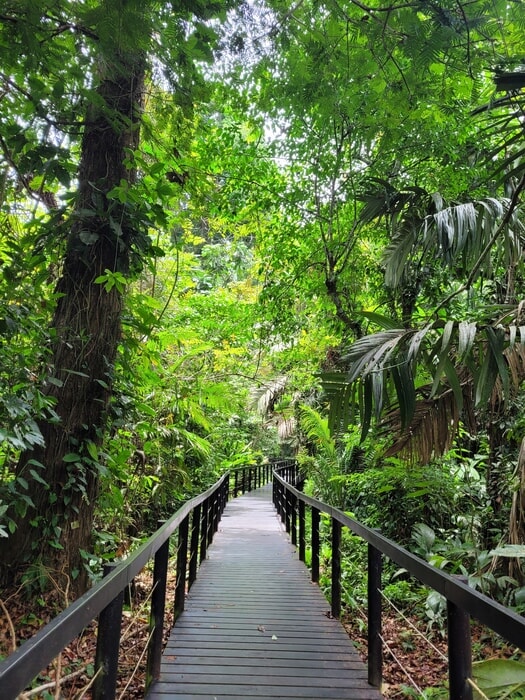
Hike the Los Cativos Trail
The hike is super easy since it’s on a raised wooden walkway above the mangroves. This means no tricky terrain to navigate—just a smooth stroll through the jungle with nothing to do but look up and enjoy the wildlife. With fewer crowds than the main trail, the forest here feels more pristine, and the animals aren’t as skittish. The peaceful atmosphere really allows you to soak in the natural sounds of the jungle.
Along the way, we saw massive trees stretching high into the sky, monkeys swinging from branches, vibrantly colored birds, and even some reptiles lounging in the sun. We didn’t spot any sloths here, but they’re definitely around—so keep your eyes peeled and let us know if you have any luck!
Snorkeling in Punta Cahuita or Punta Puerto Vargas
One of the biggest surprises of our trip to Cahuita wasn’t just the rainforest—it was what lay beneath the waves. This park might seem small on land, covering about 3,000 acres, but its protected marine area spans over 55,000 acres, making it home to the largest coral reef in Costa Rica. If you want to experience snorkeling in Costa Rica, you’re in for a treat.
Now, before you start planning a solo adventure, keep in mind that snorkeling in Cahuita, Costa Rica, is only allowed with a guided tour. We weren’t aware of this at first, but luckily, we managed to book a private boat tour at the Playa Blanca entrance. If you want to go prepared, I highly recommend booking this snorkeling tour in advance.
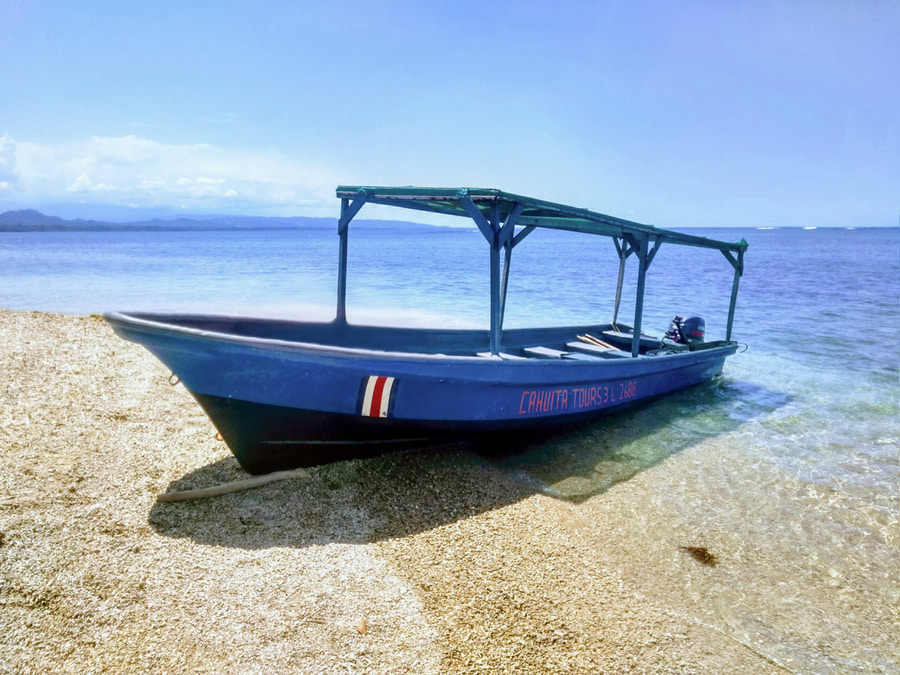
Snorkeling in Punta Cahuita or Punta Puerto Vargas
I’ve been fortunate enough to snorkel in some pretty incredible places around the world, but this experience was something special. The reef here is bursting with life—everywhere you look, there are corals in shades of purple, orange, and green, with delicate polyps that seem to breathe as the current sways them back and forth.
After an unforgettable time in the water, the boat dropped us off at Punta Cahuita, where we made our way back along the coastal trail, still grinning from ear to ear. It was one of those experiences that sticks with you long after the trip ends.
Enjoy Playa Blanca or Puerto Vargas Beach
In my opinion, the beaches in Cahuita National Park are among the most beautiful beaches in Costa Rica. Playa Blanca is straight out of a postcard. It’s a stretch of powdery white sand, crystal-clear waters, and swaying palm trees that make you want to stay forever. Right at the entrance, there’s a small booth where they ask for a voluntary donation to help maintain the beach. It’s open from 8 a.m. to 4 p.m., and remember that staying after hours is strictly prohibited.
If you’re looking for a quieter, less crowded beach, Playa Vargas is a fantastic alternative. You’ll find it in the Puerto Vargas section of the park, which is open from 7 a.m. to 5 p.m. Unlike Playa Blanca, there’s a mandatory entrance fee here, but the upside is that you’ll find picnic and barbecue areas, as well as better access to the park’s trails. The vibe is generally more relaxed, perfect for those who want to avoid crowds.
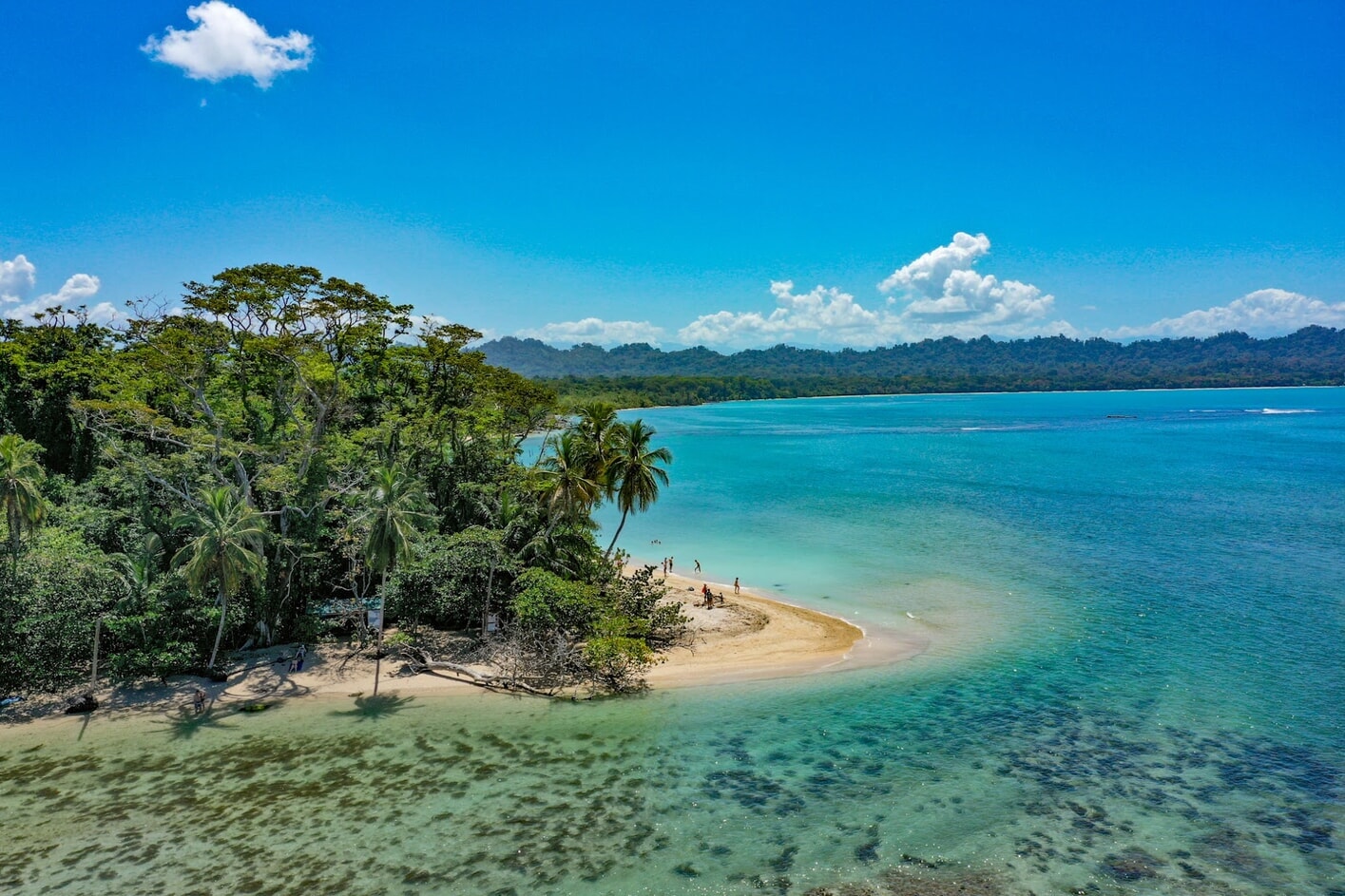
Enjoy Playa Blanca or Puerto Vargas Beach
Outside the park, the town of Cahuita has some other great beach options. Playa Negra is one of the most popular, featuring unique black sand and plenty of space to stretch out and listen to the waves. This beach has a livelier atmosphere, with beachfront bars, restaurants, and even activities like surf lessons and horseback riding.
If you’re looking for absolute solitude, Playa Grande is your best bet. Since it’s farther from the center of Cahuita, it’s one of the least-visited beaches in the area. The only people you’ll likely see here are a handful of travelers and guests from the few nearby hotels.
Top attractions near Cahuita National Park
Now that you’ve explored Cahuita National Park, why not check out some of the other natural wonders in the area? If you’re renting a car in Costa Rica, getting around will be much easier, and trust me—you’ll want to explore these amazing nearby spots!
Puerto Viejo
While Cahuita is the closest town to the park, Puerto Viejo is where you’ll find a lively atmosphere infused with Caribbean reggae culture. If you’re staying in the area for a few days, this town is one of the top tourist destinations on Costa Rica’s Caribbean coast. It’s the perfect combination of stunning beaches, rich wildlife, and a unique culinary scene that sets it apart from the rest of the country.
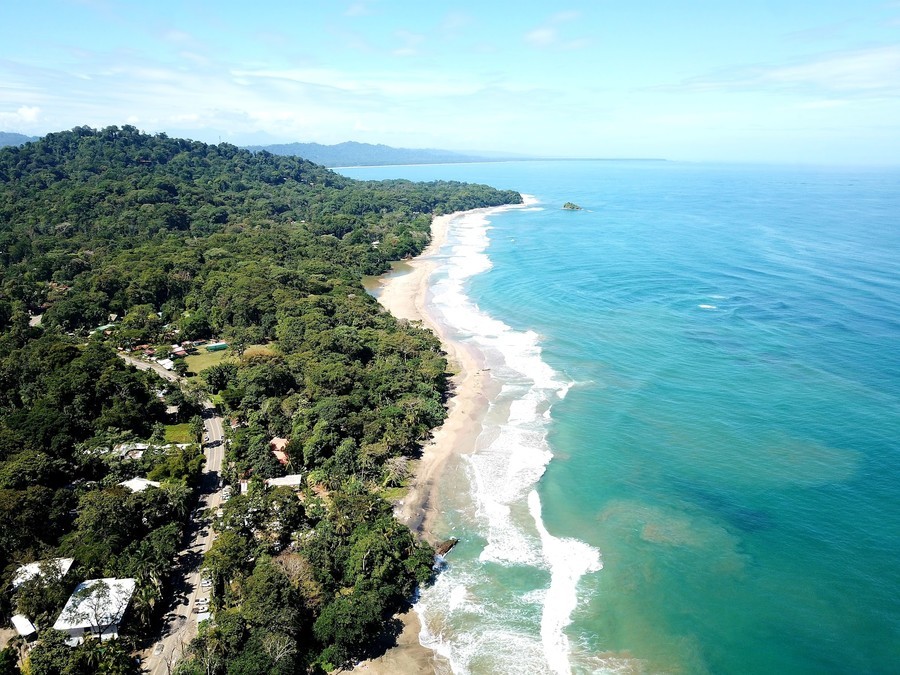
Puerto Viejo
One of the fun things to do in Puerto Viejo is to rent a bike and pedal along the coastline. The area is dotted with beautiful beaches, including Playa Cocles, Playa Chiquita, Punta Uva, and Manzanillo, which I’ll tell you more about in the next section. You don’t even have to go looking for wildlife here; just keep an eye on the trees near the beach and along the roads, and you’ll likely spot a sloth hanging out in the branches.
Manzanillo
About 8 miles south of Puerto Viejo, you’ll find Manzanillo, a peaceful little town that still feels like an old-school Caribbean fishing village. With colorful streets, a relaxed vibe, and postcard-worthy beaches, it’s an incredible place to slow down and enjoy the scenery. But what makes Manzanillo truly special is its location inside the Gandoca-Manzanillo Wildlife Refuge, a massive, protected area with about 9 miles of untouched coastline.
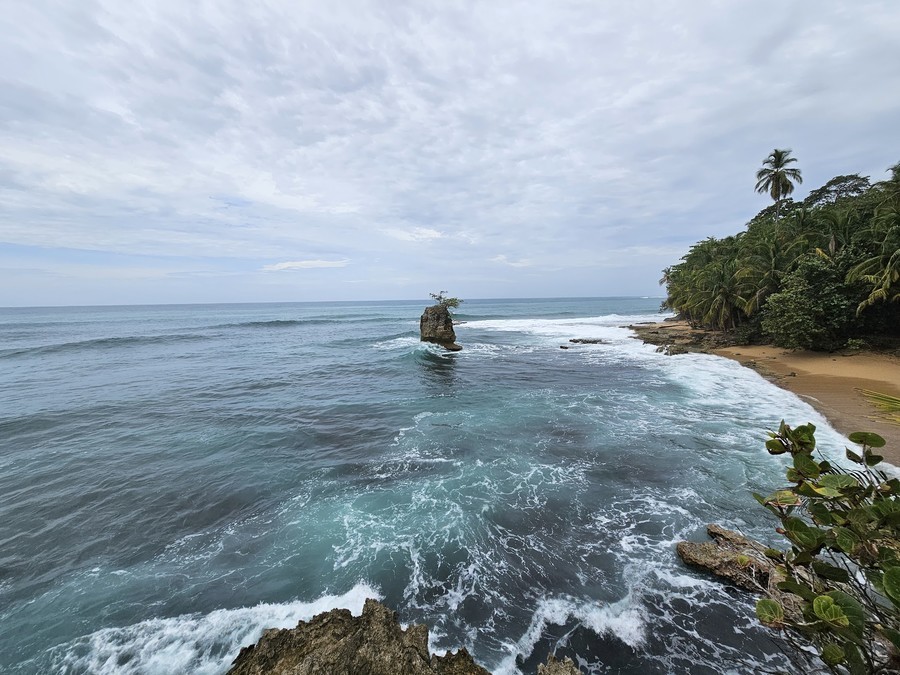
Manzanillo
This nature reserve is completely free to visit, and it offers a 3-mile hiking trail that leads to Punta Mona. Along the way, you’ll walk through three different ecosystems: rainforest, wetlands, and mangroves. If you can, I highly recommend hiring a local guide to help you find and identify animals you might otherwise miss.
The best time to visit Cahuita and Manzanillo is between March and June, as you can witness one of the most incredible natural events in the country. This is the season when Costa Rican leatherback sea turtles come ashore to lay their eggs.
Sloth Sanctuary
If you’re an animal lover, the Sloth Sanctuary in Limón is a must-visit. This place isn’t just a tourist attraction—it’s one of the most important wildlife rescue centers in Costa Rica, dedicated to saving and rehabilitating sloths that have been injured or orphaned due to deforestation and accidents.
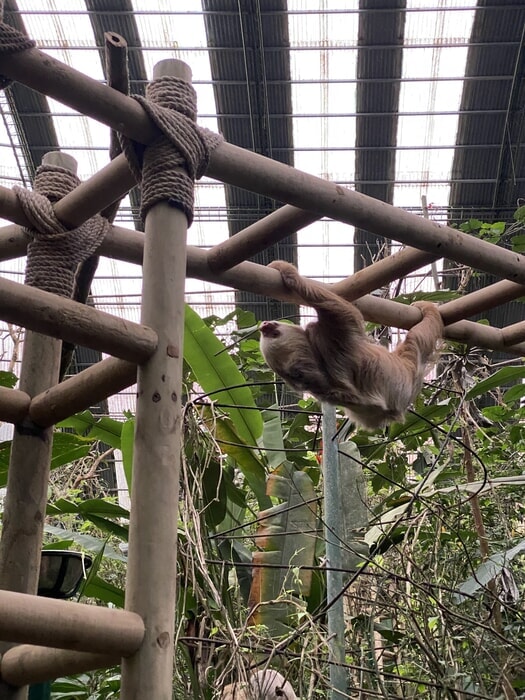
Sloth Sanctuary
The sanctuary is home to over 200 sloths and protects about 790 acres of native rainforest where these adorable creatures can roam freely. One of the highlights of the visit is a canoe tour through the mangroves, where a knowledgeable guide will teach you all about sloths, their habits, challenges, and how they’re cared for at the center.
One of the things that touched me the most was the story of how the sanctuary began. Back in 1992, after a major earthquake, three young girls brought a tiny orphaned sloth to the Arroyo family, who owned the land. With no prior experience, they learned how to care for it, and from that one act of kindness, the sanctuary grew into what it is today.
Entrance fee to Cahuita National Park
Keep in mind that you can’t buy your entrance ticket to Cahuita National Park online. Instead, you’ll need to purchase your ticket in person at one of the designated entrances. You can pay with cash or card, but keep in mind that the price and payment method depend on which entrance you use.
Entrance to Cahuita through Playa Blanca
There’s no official entrance fee for entering Cahuita through Playa Blanca. Instead, they ask for a voluntary donation. It’s suggested to leave around $5 per person to help support the park’s maintenance and conservation efforts.
If you’re driving, Playa Blanca has an official parking lot that charges about ₡2,000 (roughly $4).
Entrance to Cahuita through Puerto Vargas
If you enter the park through Puerto Vargas, the entrance fee is $5 for international visitors and ₡1,000 (about $2) for locals. Unlike Playa Blanca, parking is free at this entrance.
Cahuita National Park operating hours
Cahuita National Park has two different entrances, and each has its own opening hours:
Playa Blanca sector schedule
Open daily from 6:00 AM to 5:00 PM.
Puerto Vargas sector schedule
Open daily from 8:00 AM to 4:00 PM.
How to get to Cahuita National Park
Wondering how to get to Cahuita National Park? The good news is that it’s one of the easiest national parks to reach in Costa Rica! Here are your best options:
- By car: Take Route 32 toward Limón, then merge onto Route 36, which takes you straight to the park’s Playa Blanca entrance. This final stretch runs along the coast, so you’ll get gorgeous ocean views as you drive. If you’re heading to the Puerto Vargas entrance, keep going another 3 miles. No need for a 4×4 or SUV; the roads are paved, well-marked, and in great condition.
- By bus: Direct buses to Cahuita leave from Terminal del Atlántico in San José (located at 9th Avenue and 12th Street). The Mepe bus company runs this route, and the trip takes about 5 hours. Once in Cahuita, you can either take a local bus to the park entrances or simply walk the scenic trails between them.
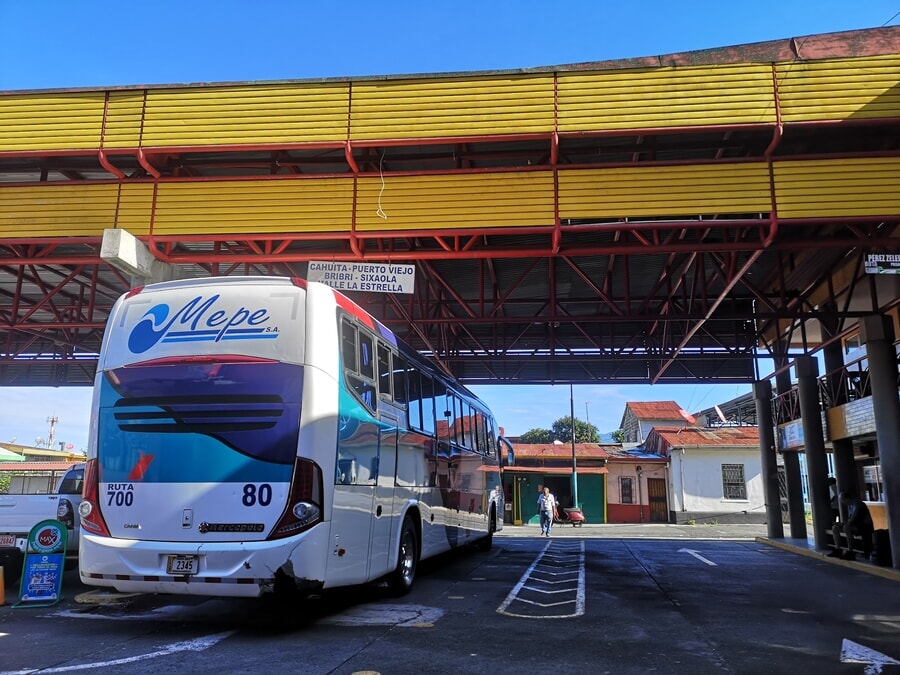
How to get to Cahuita National Park
- By plane: If you’re short on time, you can fly from San José to Limon International Airport —the closest airport to Cahuita— on a small regional plane. From there, Cahuita is about 19 miles away, and you can get there by taxi or public transportation.
Tips for visiting Cahuita National Park
To make the most of your visit and help protect this incredible ecosystem, here are some essential tips to keep in mind:
- Don’t feed the animals.
- Don’t pick flowers or any plants.
- Smoking is prohibited anywhere within the park.
- Take your trash with you, and be sure to leave the park as you found it.
- Stay on marked trails and avoid wandering off-path.
- If you’re swimming, pay attention to warning signs about currents in certain areas.

Tips for visiting Cahuita National Park
- Bring insect repellent. The mosquitoes can be pretty bad, especially during the rainy season.
- The park has showers, restrooms, and changing rooms, but there are no restaurants in the park, so plan accordingly.
- The climate can be very humid and hot, so bring plenty of water.
- Watch out for monkeys and raccoons. These little guys are clever and curious, and they might try to snatch your snacks or belongings, so keep everything secure.
- The rainy season runs from May to July, but the rain is often brief. If you visit during this time, check with the ticket office for updates on the river levels, as floods can sometimes block certain trails.
Best hotels in Cahuita, Costa Rica
If you’re looking for a nice place to stay in Costa Rica near Cahuita National Park, you can opt for the small town of Cahuita itself. But if you have a rental car, I’d also recommend checking out hotels in Puerto Viejo, which include a wider range of accommodations.
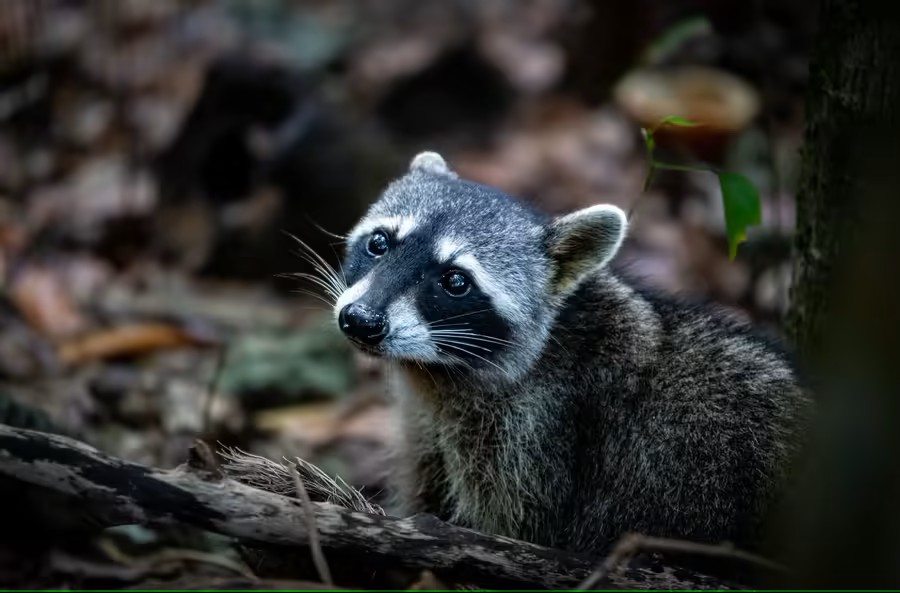
Best hotels in Cahuita, Costa Rica
Here are some of my top hotel recommendations in Cahuita:
- Luxury accommodation: If you’re looking for a mix of comfort and value, Hotel La Diosa is a fantastic choice. It offers bungalows with two or three bedrooms and suites with private whirlpool tubs—perfect for couples or families. Every unit comes with a private outdoor terrace, so you can relax and enjoy the fresh air. The resort has a swimming pool and a lush tropical garden, but my favorite part is its private beach.
- Mid-range accommodation: Hotel El Encanto offers tropical-style rooms with distinctive rustic wood decor. Every room has a private terrace, so you can relax in the comfort of your room. The hotel features a pool, an on-site restaurant serving both local and international dishes, and a lively bar where you can enjoy a drink. Plus, it’s just 150 feet from the beach.
- Budget-friendly accommodation: Playa Grande Lodge is a great pick if you’re traveling on a budget. It’s located just outside Cahuita, only steps away from Playa Negra. They offer bungalows, apartments, and chalets, all with private balconies or terraces. Breakfast here is delicious, and some units even come with kitchens and dining areas.
Best restaurants in Cahuita
As I mentioned earlier, Cahuita and the Limón region have a distinct food scene that’s different from the rest of Costa Rica. Thanks to the area’s European and Afro-Caribbean influences, you’ll find flavors here that you won’t get anywhere else in the country.
Here are some of the best restaurants in Cahuita:
- Coco’s Bar: If you love seafood, this is the place to be! With a laid-back, casual atmosphere, the menu offers a mix of local and international dishes. I highly recommend trying their patacones (fried plantains), fish ceviche, or a fresh-caught fish fillet. They also have live music and great cocktails at reasonable prices.
- Coral Reef Restaurant: This spot serves hearty, local-style meals with generous portions. Their chicken and rice is the star of the menu, but they also have a variety of other options.
- Cahuita Pizza Restaurant: if you’re craving pizza, look no further. This place serves all kinds of pizzas, including vegetarian and vegan options. They also offer meat dishes and shareable appetizers, making it a great spot if you’re dining with friends or family. The best part is that it’s located right by the ocean, so you can enjoy your meal with the sound of the waves in the background.
Map of Cahuita, Costa Rica
Before your trip, I highly recommend checking out our map of Costa Rica to plan your route. It’ll help you navigate the area more easily and might even lead you to new places you didn’t know about. Below, you’ll find a downloadable map with all the must-see spots in Cahuita:
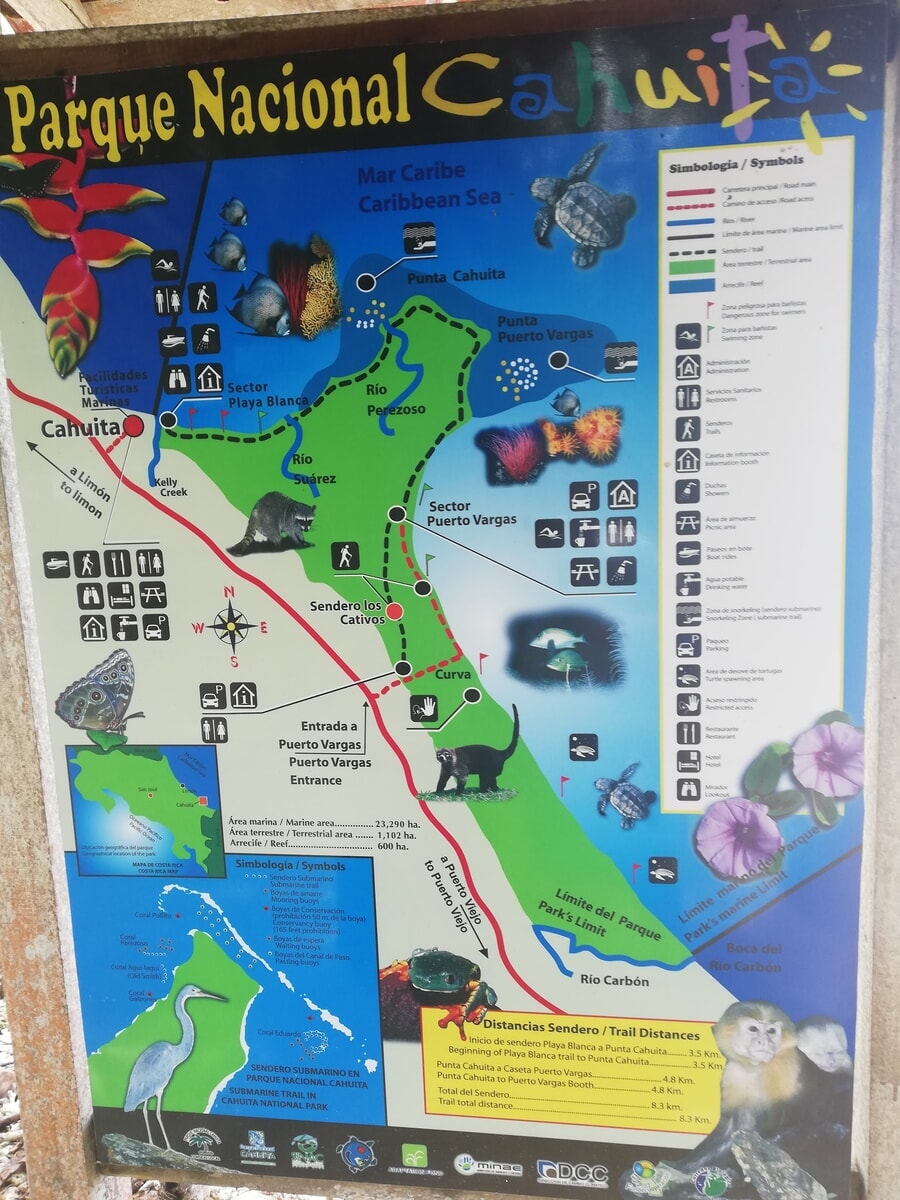
Map of Cahuita, Costa Rica
And that’s a wrap! If you have any questions about Cahuita National Park in Costa Rica or want to share your experiences spotting sloths, hiking, or enjoying the beaches, drop me a comment below. I’d love to hear about it!
Pura Vida!
